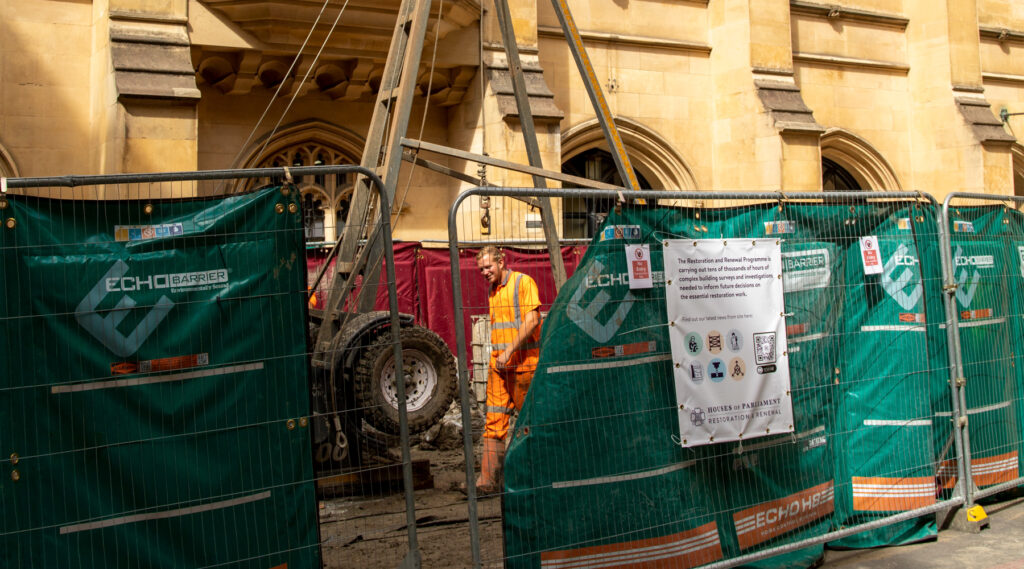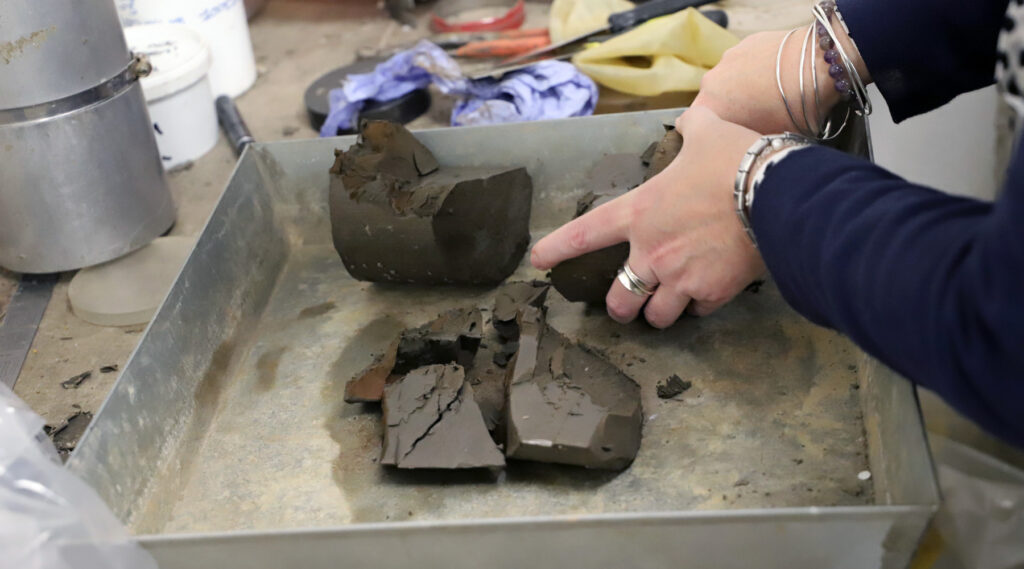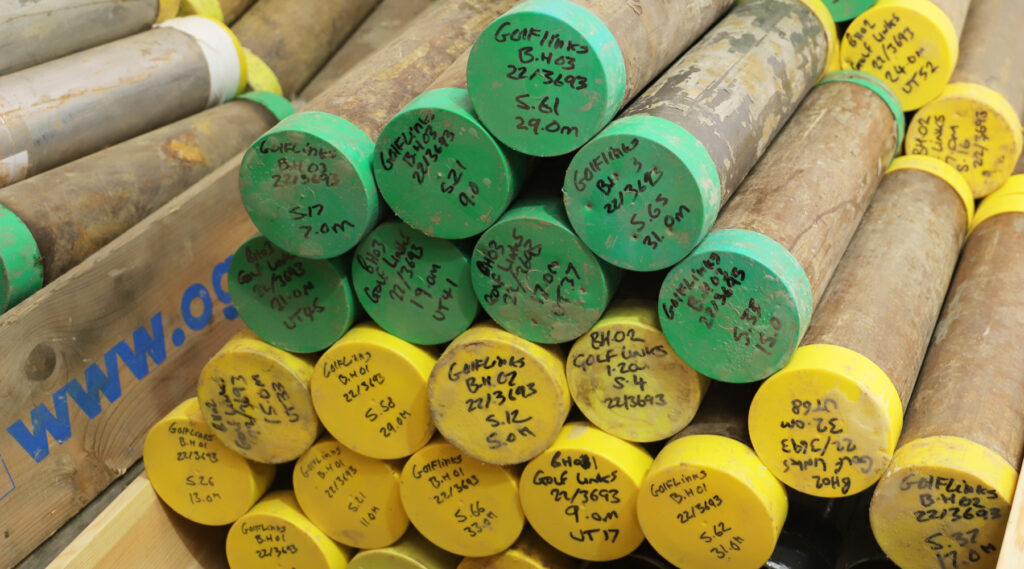What could be the remains of an original riverside medieval wall may have been discovered underneath the Houses of Parliament.
The discovery came as the result of a series of boreholes that were drilled down into the ground underneath the historic Palace of Westminster as part of a research project to understand the ground conditions. This is necessary before they can start major work on restoring the building.
Over the summer and early autumn, specialists examined 160 rooms and driled boreholes up to 70 metres deep into the ground.
During a geotechnical borehole investigation in Chancellor’s Court, near the House of Lords chamber, the discovery of a section of a possible medieval river wall meant the borehole drill was paused and the discovery assessed by archaeologists from the Museum of London Archaeology (MOLA).
The structure is likely to be at least 700 years old and is made from Kentish Ragstone, a hard grey limestone quarried from Kent that was also used in the construction of the Tower of London and Westminster Abbey.
A wall, also made of Kentish Rag was discovered in 2015, and it’s this river wall which may have also been discovered underneath Chancellor’s Court. The supporting structure for the stone wall consisted of elm piles and oak sill beams. Two of the elm piles were radiocarbon dated to 1290-1399 and 1224-1298 respectively. The wall may have included a wharf, but it seems that this was later filled in to create a solid wall along the riverside.
Ground samples will be sent to a specialist lab in Coventry for testing to better understand the composition of the ground, while MOLA will also conduct its own archaeological report based on the data from the boreholes to confirm more about the discovery of the possible river wall.
Patsy Richards, interim CEO, Houses of Parliament Restoration and Renewal Sponsor Body said: “We expect more exciting finds from dozens of surveys carried out over the coming months. We are also working really closely with the teams who keep the Palace running now. As we learn more from our surveys, we can develop in more detail proposals to agree a safe and cost effective way to plan the work needed to restore the Palace of Westminster and preserve it for future generations.”
The boreholes are part of a programme of building investigations by the Houses of Parliament Restoration and Renewal Delivery Authority. Archaeologists have been on-site for each of the boreholes to record any finds of historical significance which could add to records of the Palace. A small amount of material from the river wall was removed for analysis before the site was sealed up again to protect the structure.
The boreholes are also able to give archaeologists an insight into the layout of the land thanks to the sediment that built up along the river and now shows up in the core samples. It can help them reconstruct what the topography of the landscape was in Westminster at the beginning of the Holocene era and when hunter gatherers were coming back into Britain after the Ice Age. This can give us indications about how humans were occupying the landscape. For example, Westminster being an area of gravel high ground in the floodplain would have provided an excellent place for humans to settle and camp. They would then come and exploit the rich resources of the floodplain.
The area that Parliament sits on is also known as Thorney Island, a low-rise island surrounded by streams, and was described in a purported 8th-century charter as a “terrible place”, which is probably why it was chosen to be the heart of government.
The discovery is likely the second finding of a part of the medieval river wall which runs under Parliament, which was first identified in Black Rod’s Garden in 2015, when medieval timber structures thought to represent waterfront revetments were discovered. The wall runs alongside the medieval location of the riverside. When the Palace was built in the 1800s, after many of the medieval buildings burned down, land was reclaimed from the Thames to make the Palace site bigger.
Roland Tillyer, Archaeologist from MOLA said: “It’s been really exciting being involved in the restoration and renewal of the Palace of Westminster. MOLA has previously done work in Westminster, which located the medieval river wall in Black Rod’s Garden. We were expecting it might be present in this area and the borehole in Chancellor’s Court may have encountered it.”
“The first few meters of the borehole sequence was as expected, post medieval dump deposits, which are quite soft, but then around 3.5 metres we came across much harder material, including Kentish ragstone, mixed with a sandy mortar.”
“Kentish ragstone was often used in medieval stone buildings in London, for example at the Tower of London. Kentish ragstone is one of the nearest sources of highly durable building stone near to London, which in Roman and medieval times was often quarried and imported into the city and then used to build structures like the river wall.”
Elsewhere, 160 rooms across Parliament were inspected by surveyors who are lifting up floorboards, drilling into walls and removing ceiling panels to look at a range of issues such as wall cavities, the material makeup of the building and the weight-bearing of historic flooring. Specialist teams will continue to inspect the hundreds of miles of interconnected power cables, gas, water and heating pipes as well as outdated water and sewerage systems.
In July both Houses of Parliament approved a new approach for how the work to restore and renew the Palace of Westminster should be governed and delivered.
The Restoration and Renewal Programme will develop options, guided by the R&R Delivery Authority, which will include a variety of ways in which the works can be delivered, including minimising the time and extent to which Members and staff are asked to move out of the Palace and different levels of ambition for the works.









